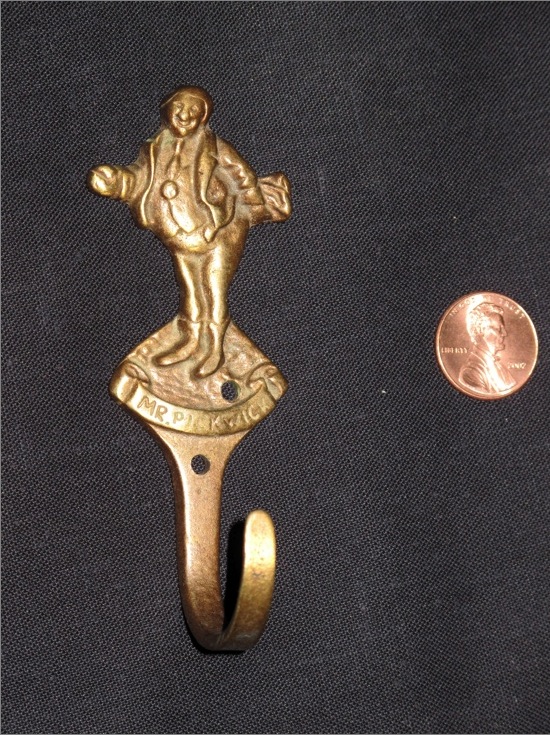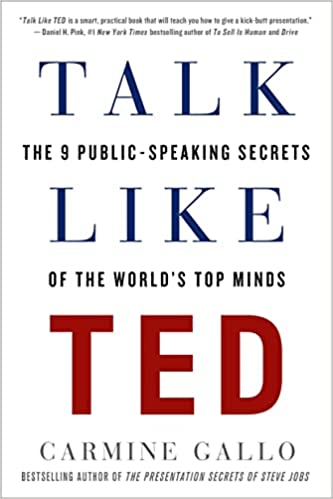Why You Need to Tell More Stories
“People do not buy goods and services. They buy relations, stories and magic.” - Seth Godin
Cruising garage sales one weekend, researchers Rob Walker and Joshua Glenn spent the morning collecting dozens of random items including a common office stapler, a box of birthday candles, a pair of shark and seal-shaped pens, and a plastic banana. Paying no more than a buck or two per item, their total investment was $124.78.
Their goal was to test the power of stories and to see if they could “transform insignificant objects into significant ones.” Their plan was to enlist the help of creative writer friends to have fun writing whimsical origin stories for each item. One writer would work on a plastic egg timer, another on the mushroom-shaped salt shaker, and so on.
This is the opening paragraph of a 600-word story written by author Christopher Sorrentino for a coat hook in the shape of Dicken’s “Mr. Pickwick” purchased for just $1.

My parka hangs from a hook whose shape is in the likeness of Pickwick, of Dickens’ classic and eponymous book. The hook is mounted on the back of my door. Above the olive-drab parka, I can see Pickwick gesturing expansively. This is kind of a funny coincidence because just earlier today…
Here’s what happened.
When combined with the often-outlandish stories, the combined garage sale “junk” sold on eBay for $3,612.51 (a markup of 2,800%)! And the coat hook fetched $38. “Stories are such a powerful driver of emotional value,” writes the researchers, “that their effect on any given object’s subjective value can actually be measured objectively.”
Why stories work
When someone tells a story something magical happens - we create a movie in our mind. We can’t help it—we develop a picture of the characters, the scene, and the drama as it unfolds. Stories are irresistible—they are “built into the human plan,” writes Margaret Atwood.
Notice what happens at a dinner when a friend interrupts the conversation with “That reminds me of when…” People pause - attention alerted - they lean in, curious, anticipating. For a moment, that speaker has earned the most valuable commodity. They have your attention.
Wired for stories
Our brains are literally wired to respond to stories. Research at Princeton found that stories cause the brains of both the storyteller and listener to sync up in a form of “brain-to-brain coupling.” The story throws a sudden detour in the path of the conversation. Any tension or disagreement is temporarily parked while everyone gets on board to see where the story takes them.
I use stories to punctuate the start of a new section in my presentations and to anchor the lesson. My story about a conversation with one of my pilots anchors the lesson Plan Like A Pilot. My story about a neighbor driving a Porsche anchors cognitive bias, and so on. When I meet audience members - even years later - they typically recall one of the stories and how it impacted them.
The currency of influence
Ideas are cheap and plentiful, but when combined with a good story they can become invaluable. “Ideas are the currency of the twenty-first century,” writes Carmine Gallo in Talk like TED, “and stories facilitate the exchange of that currency.”
We admire tech founders who started their rise to fame in a parent’s garage. We feel better paying $6 for a cappuccino knowing the coffee farmers enjoy better wages. And we are more inspired to take action on, say, climate change by pictures of melting ice caps and polar bears, than one more scary graph or statistic. “In the battlefield of ideas,” writes Jonah Sachs in Winning the Story Wars, “marketers have a secret weapon—a well-told story.”

“Ideas are the currency of the twenty-first century and stories facilitate the exchange of that currency.” - Carmine Gallo
You are a storyteller
Here’s the thing about telling stories.
You don’t need to be an ex-Olympian athlete, celebrity author, or tech founder to use stories to persuade an audience. You just need a little faith and to let the story do the work.
A comedian’s joke works because of the unexpected pivot. They lead you in one direction “Hear about the new restaurant called Karma?” and then pivot you to the punch line “There’s no menu: You get what you deserve.”
A story works because of the drama. “The first story is ‘Man in a hole’,” quipped writer Kurt Vonnegut, demonstrating the story arch, “Someone gets into trouble; gets out of it again. People love that story. They can’t get enough of it!”
If you want to influence a prospect to buy, motivate an audience, or inspire your team, use stories. An hour from now they will have forgotten most of what you told them, but they will never forget a good story.
By the way, my guess is you won’t forget the story about the coat hook.
Notes:
The researchers of Significant Objects took "care is taken to avoid the impression that the story is a true one; the intent of the project is not to hoax eBay customers.” https://significantobjects.com/
Learn more about Uri Hasson’s research using scenes from BBC television series, Sherlock and Merlin https://paw.princeton.edu/article/clicking-how-our-brains-are-sync
Watch the clip with Kurt Vonnegut here: https://www.youtube.com/watch?v=oP3c1h8v2ZQ
Cafe pic by Juri Gianfrancesco on Unsplash
Small Wins - Why Little Steps are the Path to Big Rewards
Keynotes and workshops by Hugh Culver


